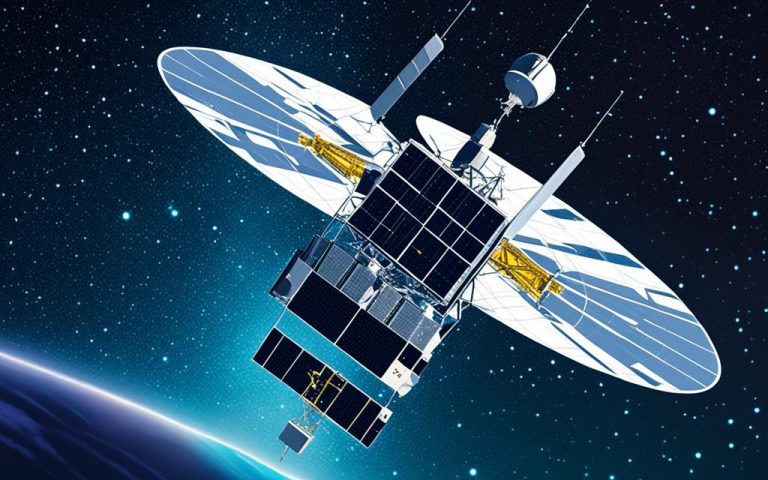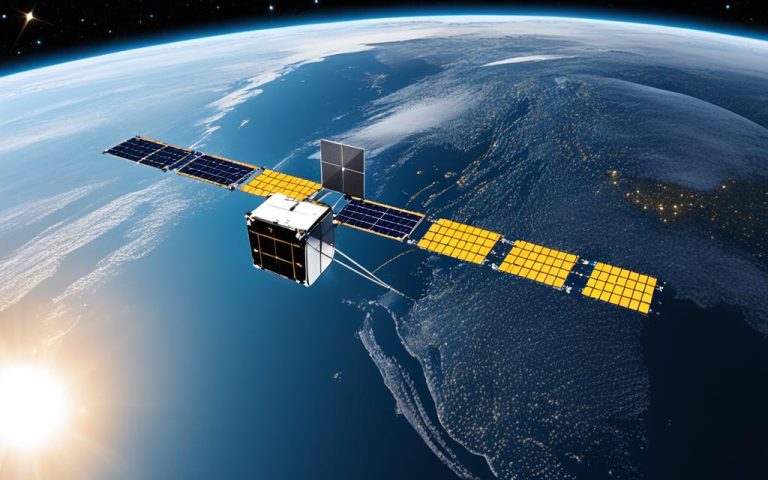Advances in satellite communications technology have led to the development of High Throughput Satellites (HTS) that revolutionize global data transfer. These satellites, equipped with unprecedented speed and capacity, have the potential to transform the way data is delivered across the world.
With more than a dozen HTS launched recently, they cater to diverse user requirements and use cases. HTS systems connect the unconnected, provide secure and resilient communications, and deliver high-quality broadband in areas where terrestrial infrastructure is lacking. With the ability to operate in multiple frequency bands and utilize spot beams, HTS systems increase power and enable smaller user terminals, enhancing the overall data delivery experience.
As the deployment of HTS systems expands, they are expected to play a key role in meeting the future capacity needs of customers across various industries. High-speed, reliable, and efficient data delivery has become critical in today’s digital age, and high-throughput satellites pave the way for seamless connectivity on a global scale.
What are High-Throughput Satellites and How Do They “Change the Game”?
High-Throughput Satellites (HTS) represent a new era in spacecraft technology that brings a significant transformation to data delivery. These advanced satellites offer a substantial increase in throughput compared to conventional satellite systems, revolutionizing the way we connect and communicate.
The key difference in the architecture of HTS lies in the utilization of multiple spot beams to cover a desired service area. This innovative approach enables higher transmit/receive gain and frequency reuse, resulting in enhanced system performance and improved user experience. HTS systems deliver increased power, allowing for higher data transmission rates and more efficient connectivity.
When it comes to system performance, HTS consideration must be given to various factors, including user requirements, system design, and frequency selection. Ka-band frequencies, in particular, play a crucial role in maximizing system efficiency. By enabling narrower beams, Ka-band frequencies offer higher throughput and more extensive capacity. Their ability to tessellate more beams on a given area translates to enhanced overall performance.
It is worth noting that Ka-band frequencies are more sensitive to atmospheric perturbations. However, these conditions are temporary and can be effectively mitigated using Fade Mitigation Techniques (FMT), ensuring uninterrupted service and maintaining optimal system performance.
https://www.youtube.com/watch?v=RY_0LK8K7Hg
| Benefits of High-Throughput Satellites: | Advantages |
|---|---|
| 1. Increased system performance | – Higher data transmission rates |
| 2. Enhanced user experience | – Improved connectivity |
| 3. Cost-effective service | – Greater efficiency |
With their ability to deliver higher throughput, improve system performance, and provide a seamless user experience, High-Throughput Satellites are changing the game in the realm of data delivery. These advanced spacecraft have a significant impact on various industries, including telecommunications, media, and connectivity solutions. The future of satellite communications is being shaped by the unmatched capabilities of HTS, offering the potential to revolutionize global data transfer.
Deployments and Frequency Bands of High-Throughput Satellites
High-Throughput Satellites (HTS) have witnessed widespread deployment across various frequency bands, with the most commonly utilized bands being the Ku-band and Ka-band. These frequency bands enable HTS systems to provide efficient and high-capacity connectivity solutions. Notable deployments include the Intelsat EPIC NG, Inmarsat Global Xpress, and Avanti HYLAS 3 and HYLAS 4 satellites.

The continuous deployment of HTS systems is expected to persist in the foreseeable future, with a particular focus on the Ka-band due to its larger capacity and relatively lower occupancy. The utilization of different frequency bands allows for optimized coverage and tailored connectivity solutions based on geographic areas and specific user requirements.
Highlighted Deployments of High-Throughput Satellites
| Satellite | Operator | Frequency Band |
|---|---|---|
| Intelsat EPIC NG | Intelsat | Ku-band |
| Inmarsat Global Xpress | Inmarsat | Ku-band, Ka-band |
| Avanti HYLAS 3 and HYLAS 4 | Avanti Communications | Ka-band |
These deployments of HTS systems illustrate their growing prominence and the industry’s focus on meeting the increasing demand for reliable and high-capacity satellite communications. By leveraging different frequency bands, satellite operators can provide targeted connectivity solutions tailored to specific regions and user requirements, driving global connectivity forward.
Performance Tradeoffs of High-Throughput Satellites
The overall performance of High-Throughput Satellites (HTS) is influenced by several factors, including user requirements, system design, and frequency selection. Among these factors, system performance plays a crucial role in delivering optimal results. In this section, we will explore the performance tradeoffs associated with high-throughput satellites, such as link budget, antenna size, and frequency selection.
Link Budget: Enhancing Signal Quality
The link budget of an HTS system determines the overall signal quality and reliability of the satellite communication. It takes into account various parameters such as transmit power, receiver sensitivity, path loss, and fade margin. The link budget is crucial for ensuring a robust and high-quality connection between the satellite and the user terminal.
“The link budget is like the backbone of a high-throughput satellite system. It ensures that the signal strength remains strong and reliable, even under challenging conditions.”
Antenna Size: Balancing Performance and User Experience
The size of the user terminal antenna plays a significant role in the performance of an HTS system. Generally, smaller antennas are desirable as they offer cost-effective and space-efficient solutions. The use of Ka-band frequencies enables smaller antenna sizes compared to Ku-band frequencies, allowing for easier installation and maintenance. However, it’s important to strike a balance between antenna size and system performance to ensure optimal user experience.
“The choice of antenna size is a critical consideration in high-throughput satellite systems. Finding the right balance between performance and user experience is key to delivering reliable and efficient connectivity.”
Frequency Selection: Maximizing Capacity and Efficiency
The selection of frequency bands has a significant impact on the capacity and efficiency of high-throughput satellite systems. Ka-band frequencies offer higher data transmission rates, higher order modulations, and narrower spot beams compared to Ku-band frequencies. This enables higher throughputs and increased capacity, making Ka-band a popular choice for many HTS deployments. While Ka-band may be more sensitive to atmospheric perturbations, such conditions have limited impact on overall system performance.
By leveraging the advantages of Ka-band frequencies, high-throughput satellite systems can maximize their capacity and efficiency, meeting the ever-increasing demands for data transfer.
| Factors | Tradeoffs |
|---|---|
| Link Budget | Optimal signal quality vs. system complexity |
| Antenna Size | Performance vs. user experience |
| Frequency Selection | Capacity and efficiency vs. sensitivity to atmospheric perturbations |
Conclusion
High-Throughput Satellites (HTS) are transforming the landscape of global data transfer, offering unparalleled speed, capacity, and connectivity solutions. These advanced satellite systems are revolutionizing satellite communications by meeting diverse user requirements, connecting previously unconnected areas, and delivering secure and resilient communications.
Throughout this article, we have explored the performance tradeoffs, frequency bands, and deployments of HTS systems. It is clear that the deployment of HTS systems is expanding, with numerous launches already providing substantial capacity. As higher frequency systems, particularly the Ka-band, become more prevalent, HTS will continue to play a pivotal role in meeting the future capacity needs of various industries and geographic locations.
As satellite communications stay at the forefront of technological advancements, the capabilities, capacity, and performance of HTS systems will undoubtedly continue to evolve. With their ability to provide high-speed data transmission and reliable connectivity, HTS is poised to meet the demands of the global digital society, ensuring seamless and efficient data delivery for years to come.
FAQ
What are High-Throughput Satellites (HTS)?
High-Throughput Satellites (HTS) are a new generation of spacecraft that offer significantly higher throughput compared to conventional satellite systems. They use multiple spot beams to cover a desired service area, enabling higher transmit/receive gain and frequency reuse.
How do High-Throughput Satellites (HTS) improve system performance?
HTS systems improve system performance by increasing power, enabling smaller user terminals, achieving higher data transmission rates, and improving overall system performance. The use of Ka-band frequencies allows for narrower beams, higher throughput, and more capacity due to their ability to tessellate more beams on a given area.
Which frequency bands are commonly used for High-Throughput Satellites (HTS)?
The most commonly used frequency bands for HTS are the Ku-band and Ka-band. These bands offer optimized coverage and tailored connectivity solutions for specific geographic areas and user requirements.
What factors influence the performance of High-Throughput Satellites (HTS)?
The performance of HTS systems is influenced by user requirements, system design, and frequency selection. Factors such as the amount of orbital spectrum available and signal quality, characterized by the carrier-to-noise ratio (C/N0), also play a role in system performance.
How do High-Throughput Satellites (HTS) contribute to global data transfer?
HTS systems revolutionize global data transfer by offering unprecedented speed, capacity, and connectivity solutions. They meet diverse user requirements, connect the unconnected, and provide secure and resilient communications.



















